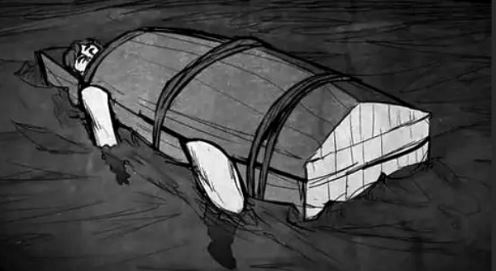1. Crucifixion
An ancient means of execution, the crucifixion is most famously connected to the Roman Empire. The procedure is nailing or strapping the victim’s wrists and feet to a wooden cross, then letting them to slowly suffocate or exhaust themselves. The condemned would often suffer for hours or even days at a time, in agonizing pain and misery. Crucifixion was used as a form of public spectacle in addition to being a means of punishment and a deterrence to future criminals. It was only given to those who were thought to pose a serious threat to Roman stability or authority. The crucifixion, for all its brutality, had a profound effect on history and culture, especially on religious tales and symbols, particularly in Christianity.

2. Flaying
The crucifixion, an ancient method of execution, is most commonly associated with the Roman Empire. The victim’s hands and feet are strapped or nailed to a wooden cross, and they are then allowed to gradually suffocate or exhaust themselves. The condemned would frequently endure excruciating pain and suffering for hours or even days at a period. In addition to being a form of punishment and a warning to potential offenders, crucifixion was also utilized as a public spectacle. Only those deemed to represent a significant danger to Roman authority or stability were granted it. Despite its extreme cruelty, the crucifixion had a significant impact on history and culture, particularly on Christian religious stories and symbolism.

3.Using rats to kill people
Using rats to kill people has been reported in various historical accounts and folklore, though it’s often depicted more in legend than in documented history. One such infamous method is known as “rat torture” or “rat torture chamber,” where rats are placed on a victim’s stomach covered with a cage or pot. As heat is applied to the container, the rats, seeking to escape the rising temperature, gnaw through the victim’s flesh in a desperate attempt to find relief. While there are tales and anecdotes about such practices, especially during medieval times, the historical accuracy and prevalence remain unclear. However, the concept reflects the ingenuity of human cruelty and the extremes to which torture methods have been employed throughout history, revealing the darker aspects of human nature.

4. Scaphism
Scaphism, or “the boats,” was a kind of torture and execution used in ancient Persia. The victim would be positioned with only their head, hands, and feet sticking out between two boats or hollowed-out tree trunks. After that, they were given a forced milk and honey mixture to make them throw up. More honey would then be applied to their body to draw insects, which would result in painful insect bites and festering wounds. The person would starve to death, become dehydrated, and eventually pass away from an infection or septic shock as their body broke down. Scaphism was a slow, excruciating kind of punishment intended to cause the greatest amount of suffering over a long period of time. Its savagery is a chilling reminder of past violence, even though its main purpose is to deter potential criminals.

5.Lingchi
Lingchi, a horrifying method of execution used in Imperial China up until the early 20th century, was sometimes referred to as “slow slicing” or “death by a thousand cuts.” The condemned would be dismembered methodically and publically tortured to death. Executors would perform a ritualistic removal of the victim’s limbs or other body parts. Rather than producing a quick death, the procedure was intended to increase misery. Lingchi was frequently performed in public squares as a means of discouraging dissension and crime. Due to the practice’s severe brutality and barbaric character, it was outlawed in the early 20th century, ushering in a dark period in China’s history of justice and punishment.


